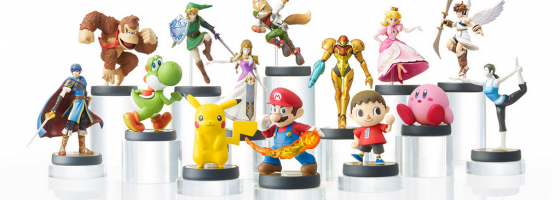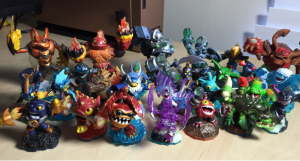Physical Goods are some of the most popular options when it comes to video game merchandise and the Kickstarter market. From buttons to massive scale figurines, they are attractive options for the discerning consumer. As a designer however, they can become a nightmare that can sink a company if you’re not prepared for the work involved. For today’s post, I’m going to talk about the three steps that go with the creation of any physical good.
Design:
The first step should be obvious — What are you selling? At this step in the process, you are only limited by your imagination. With that said however, you also must start to think about the actual product. Here are just a few of the questions that come to mind:
- What am I making?
- What kind of material will I use?
- Will it come in its own box?
- If so, what will the box look like?
Depending on the physical good in question, there can be product-specific points as well. Nevertheless, the earlier you start thinking about these details, the better.
So you have your product all sketched out, now things really get tricky.
Manufacturing:
Unless you happen to have a manufacturing plant as a part of your studio, you’re going to need to work with a manufacturer to handle the mass creation of your physical good. This is where research will be required. Most manufacturing from what I’ve heard is handled outside of the United States. Different plants are set up for different goods, and will have different costs and time-frames.
What usually happens is that after you send over all the details regarding your good, the manufacturer will create a template mock-up for you to review. You must sign off on the template, because you cannot make any changes once production starts. It’s important to realize that when dealing with a third party like this, you need to give yourself some wiggle room in terms of a time table.
It doesn’t matter how well you plan if the factory shuts down for a holiday, or a storm causes a delay with shipping your goods.
When the manufacturing process is done, you’re going to be left with a whole lot of physical goods to move, and that takes us to the final point.
Fulfillment:
The manufacturer will never handle fulfillment for you, and for that, you have one of two options. You can either handle the fulfillment yourself, or hire a third party company to do it for you. Depending on the scope of your physical goods, having a third party is the easier of the two options.
Getting your physical goods to your customer will take into account everything up to this point. Each item will cost you depending on the weight and where it’s going. Please note: When you are preparing to offer and price your physical goods, ALWAYS HAVE AN ADDITIONAL FEE FOR INTERNATIONAL SHIPPING.
If you’re not careful, it’s very easy to lose money at the fulfillment stage. Having a third party help you may cost more money, but it will cut down on you having to manage this stage of the process.
Wrapping it Up:
Physical Goods can be a powerful motivator to get someone to contribute or buy an item. There is just an allure of owning something you can display and touch that goes beyond digital. However, it’s very easy to lose out if you fail at any of the three steps.
While many designers will tell you it’s not worth it, at the end of the day, physical goods are just like a video game: It takes a lot of planning to get it right. If you’re going to go down the route of physical goods, always do research.
If you have any suggestions or tips regarding physical goods, feel free to leave them in the comments below.



